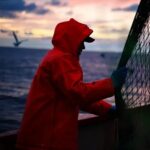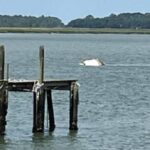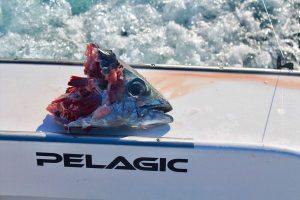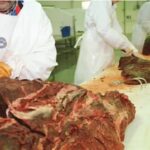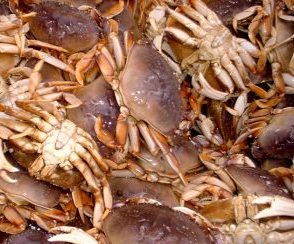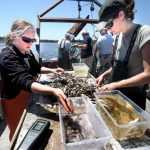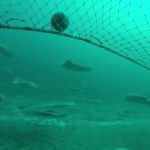“Rachels and Ricks”, Valid Study or CCA Tricks?
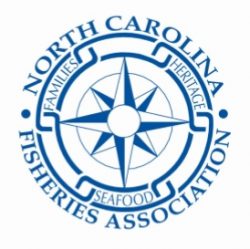 At the August Marine Fisheries Commission (MFC) meeting, Amendment 2 to the Striped Bass FMP and the unjustified net ban in the upper Neuse and Pamlico Rivers was on the agenda once again. Amendment 2 was up for final approval by the MFC, which we strongly opposed as long as the continuation of the net ban in the upper Neuse and Pamlico Rivers is incorporated into the Amendment.
At the August Marine Fisheries Commission (MFC) meeting, Amendment 2 to the Striped Bass FMP and the unjustified net ban in the upper Neuse and Pamlico Rivers was on the agenda once again. Amendment 2 was up for final approval by the MFC, which we strongly opposed as long as the continuation of the net ban in the upper Neuse and Pamlico Rivers is incorporated into the Amendment.
The Coastal Conservation Association (CCA) of NC, on the other hand, seemed to support the final approval of Amendment 2, only if the net ban remains part of the FMP.
Surprised?
Probably not, after all for decades the CCA has pushed for a net ban and, for decades, the NCFA has opposed this extreme agenda, making the gill net debate a constant source of friction at virtually every fisheries meeting. Another constant through the years has been the CCAs willingness to misinform and misuse data to support their agenda and the August MFC meeting was no exception.
During the public comment period, CCA supporters pointed to the increased commercial harvest of two species, Speckled Trout and Striped Mullet, as proof that commercial fishermen weren’t negatively impacted by the net ban and as proof that the ban is working.
Speckled Trout and Striped Mullet?
Supposedly the net bans were implemented to protect Striped Bass but with no data to suggest that the overall abundance of Stripers has increased, the CCA was forced to look at the harvest of other species in these rivers to attempt to justify the continuation of their precious net ban. Admittedly, I haven’t looked at commercial landings for these species in the Neuse and Pamlico Rivers to verify or disprove their claims because it’s irrelevant.
The truth is, without looking at data outside of these river systems you can’t determine whether the increased landings were attributed to the net ban or simply an increase in overall abundance across the state. Simply put, if landings of Speckled Trout and/or Striped Mullet increased in other waterbodies or statewide it can’t be the result of a net ban in the upper Neuse and Pamlico Rivers.
Of course, when you’re grasping for straws, you’ll grab onto anything to keep you afloat, no matter how insignificant it really is, and that’s what the CCA is doing. As former DMF Director, Steve Murphey, and former DEQ Secretary, Michael Regan, pointed out, the science doesn’t support this net ban but the CCA still, more than three years later, attempts to misuse the science to support their extreme agenda.
CCA representative on the Commission, Commissioner Tom Roller, also joined in on the deception by reading from the NCWRC “Rachels and Ricks” study in an attempt to prove gill nets are the most significant source of mortality for Striped Bass in the Central management area. Mr. Roller’s comment triggered a response from DMF Striped Bass biologist Charleton Godwin, who explained that the Rachels and Ricks study only included commercial gill net removals, as a source of fishing mortality, and that when DMF included recreational removals they were as significant a source of mortality as were gill nets.
In other words, if the WRC only looks at natural mortality and commercial fishing mortality, the computer model has no choice but attribute all unexplained or “cryptic mortality” to the gill net fishery.
As Commissioner Roller read on the record, the Rachels and Ricks study “suggests that the commercial multispecies gill net fishery imparts substantial mortality even when the Striped Bass harvest season is closed.”
That’s right, the study “suggests”, not shows, verifies, proves, or any other term that would imply that these findings were concrete or undeniable!
Mr. Roller conveniently failed to read the very next line in the study which states:
“The reason for this mortality is obscure, but may be attributable to dead discard mortality, over quota and high grading mortality; avoidance, predation, and drop-out, mortality; or unreported, misreported, and illegal harvest.”
“Obscure”, means unknown, which explains the laundry list of factors they listed that “may” be responsible for this “obscure” mortality.
Of course, if the WRC had have included recreational removals and trips the model would have known that a recreational fishery actually exists, and this unexplained mortality may not have been so “obscure”.
The sad thing is that the limitations of the “Rachels and Ricks” study are old news! They’ve been pointed out, for years now, by the NCFA and DMF staff and are noted in the study itself by the authors.
So, why would the CCA continue to present this study as scientific justification for their net ban?
For two simple reasons.
First, flawed or not, this is the only data that even “suggests” that their gill net ban is justified. Second, the CCA will stop at nothing to fulfill their agenda and disregarding morals, truth, and science is just another day at the office for them!
In my mind, the Rachels and Ricks study has raised more questions than answers and the most important question is this.
How can stakeholders have any faith in scientific studies or stock assessments knowing that the intentional exclusion of relevant data or simply a lack of sufficient data can result in such a biased conclusion?
Ever wonder why the data doesn’t match what you’re seeing on the water?
Me too!
Now I’m wondering if it’s intentional or just a lack of data!
Glenn Skinner
NCFA- Executive Director


































